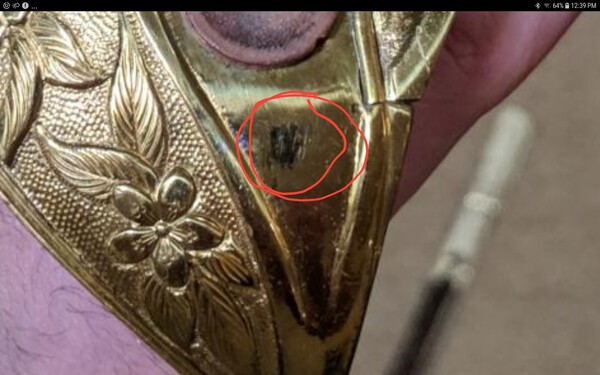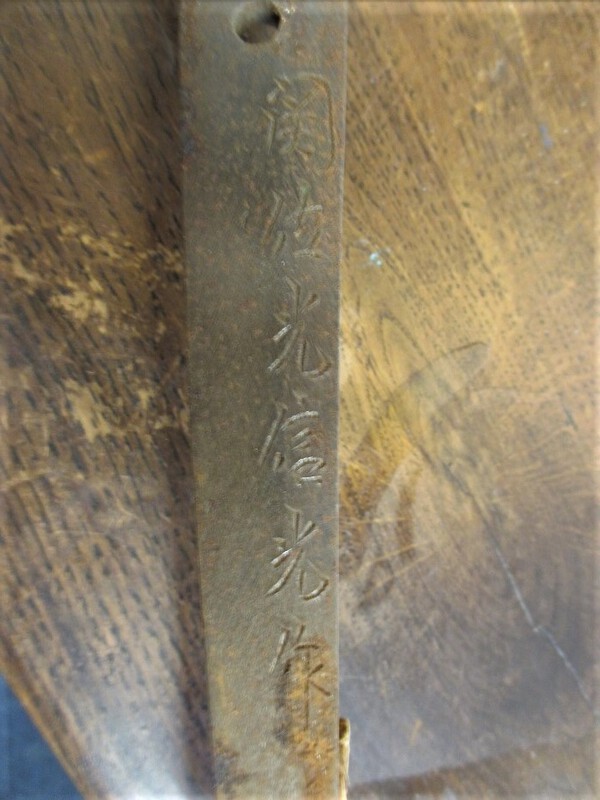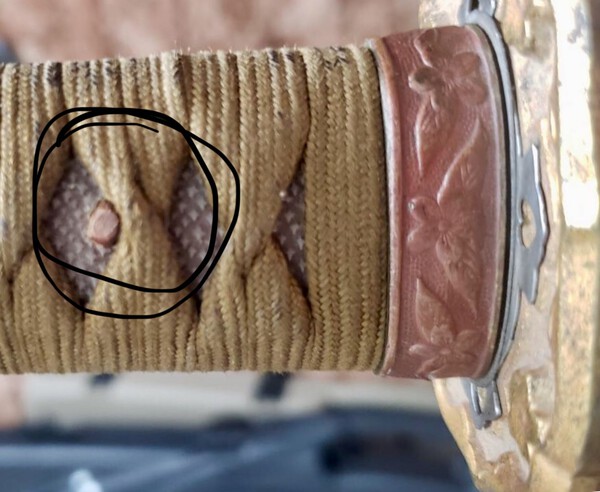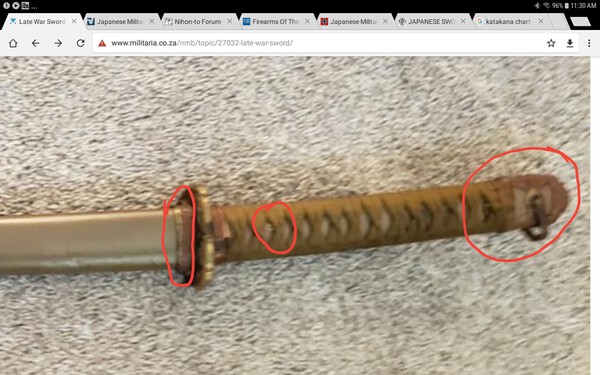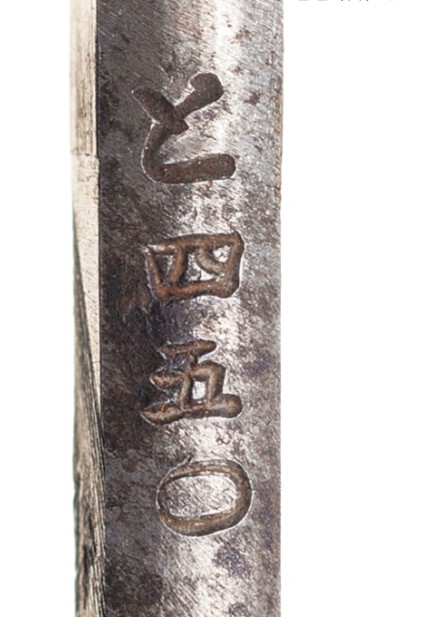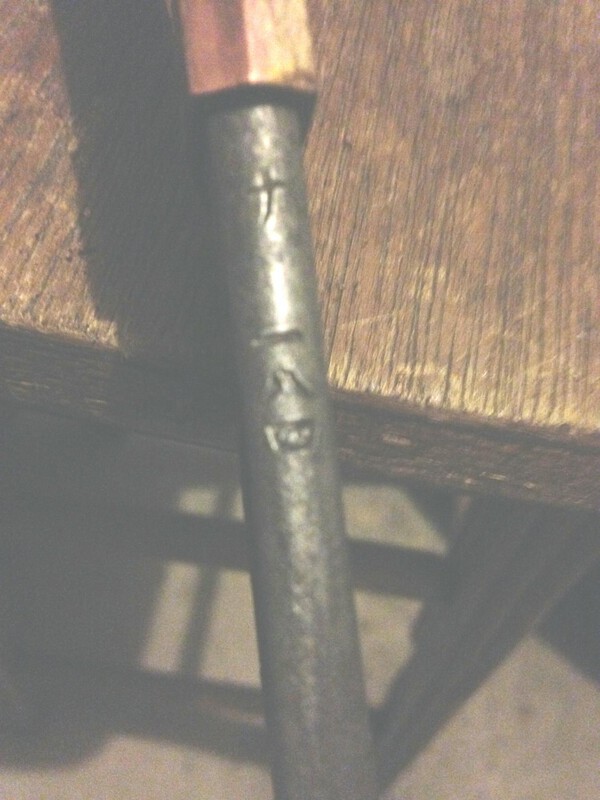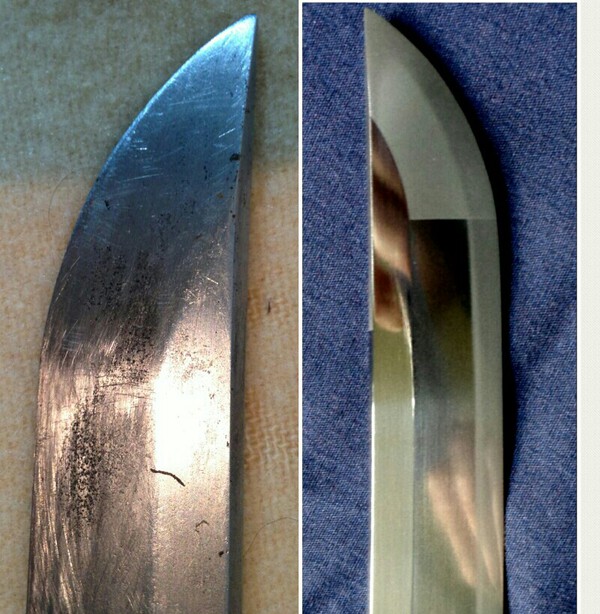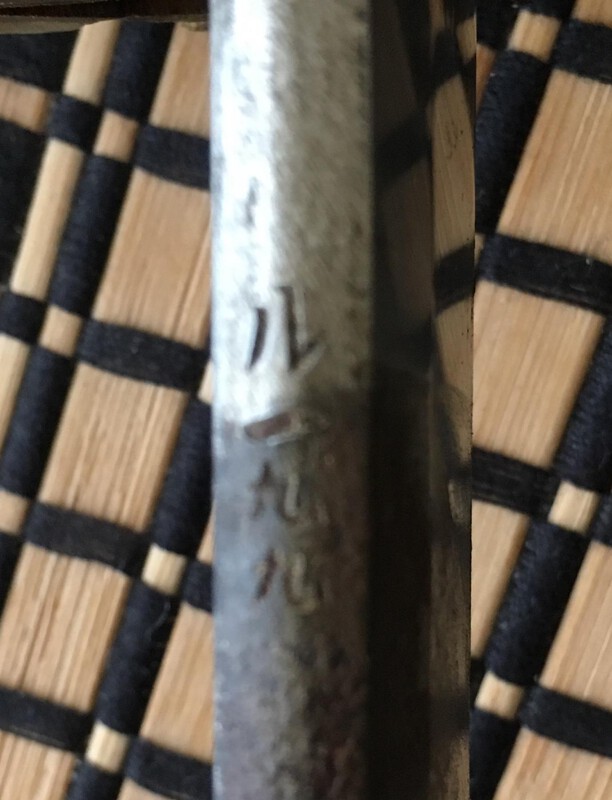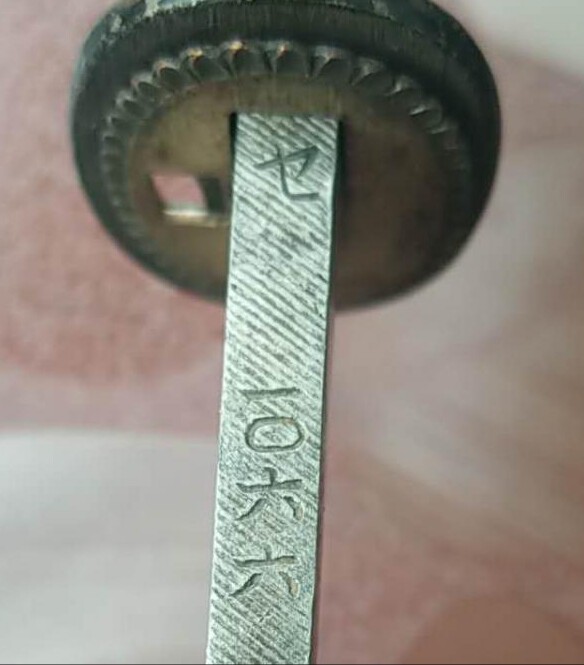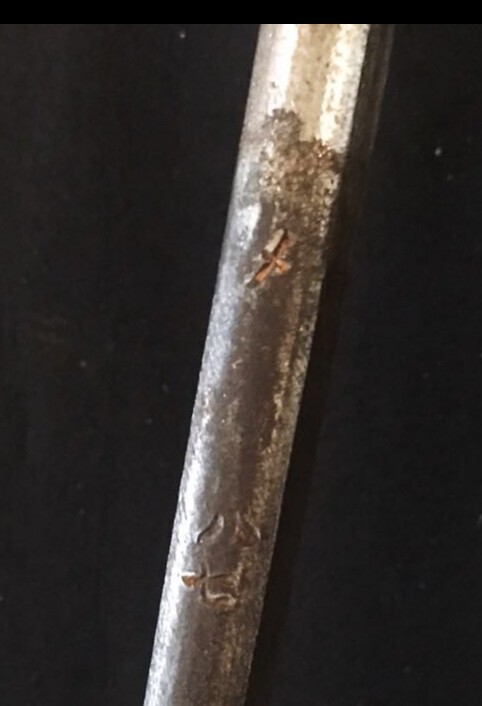-
Posts
12,963 -
Joined
-
Last visited
-
Days Won
154
Content Type
Profiles
Forums
Events
Store
Downloads
Gallery
Everything posted by Bruce Pennington
-

Attention Mantetsu Owners: A Survey
Bruce Pennington replied to Bruce Pennington's topic in Military Swords of Japan
A quick update on the tabulations. I've added tracking for seasons on the dates - Spring, Summer, Autumn, and Winter. Amazingly, out of 70 blades, 60 are "Spring"!!! I have NO speculation as to the reason. More than half of the years are in the '41-'43 range (44 of them). One might expect that as the USA entered the war Dec '41. Blades made before that could have a higher chance of serving in China/Asia and ending up in Chinese hands. Still puzzled by the total absence of '45 blades. I greatly appreciate the tips coming in from you guys on blades I haven't seen yet! Updated charts attached. Mantetsu Serial Numbers.docx -
Didier, I assume by "army gunto" you mean wartime showato? as opposed to an old blade retr-fitted for army use? Because gunto simply means "army sword" (gun - army; to - sword), so any blade, old or new, fitted for army use would be called a gunto.
-

First Japanese Sword 1883 Navel Sword
Bruce Pennington replied to Martin P's topic in Military Swords of Japan
That's quite gorgeous Martin! Seems custom made. Dawson points out that there was a multitude of variations of this model. What is that on the guard, that I circled? Is it a stamp or just a smudge? If stamp - is it something you can clean so we can see what it is? Grant, didn't the Germans stamp their blades with "Solengen" or something similar? -
Yes “shingunto”. But their effort truly was a “sin!”
-

Could Anyone Identify This Signature Please
Bruce Pennington replied to matthew's topic in Military Swords of Japan
Bingo! Nice work Ray! -
The serial numbers in the blade are a sure mark of a fake. Without the numbers and kanji on the blade, they might have tried to pass it off as an island sword.
-

Could Anyone Identify This Signature Please
Bruce Pennington replied to matthew's topic in Military Swords of Japan
-
Great example. Hey am I seeing black same’ on that army Guntō?
-
You might be referring to the painted on assembly numbers? Not uncommon. My theory is that contract swords bought directly from a sword shop wouldn’t have those numbers. The painted ones are likely from the Arsenal factories and larger companies that cranked out larger numbers at a time. Just speculation though.
-
And after all that, it's not signed! Well, standard Type 98 WWII gunto. The officer obviously paid for the sharkskin upgraded tsuka, but it's odd that the seppa are seemingly plain (though, someone, post-war, may have stripped them). Closeups of the blade and hamon (temper line) would confirm whether oil quenched showato, but it probably is. Decent pattern, though.
-
Tom, After seeing everything in better focus, I agree with Steve that this gunto probably had a full leather cover originally. I couldn't comprehend them missing ashi (suspension ring). They don't come off. But if this were covered in leather, the ashi for that style are different and probably did slip off once the leather cover went missing. I wouldn't call this "late-war" at all. It could have been made at any point in the war. I don't know if I'm communicating clearly about the mekugi peg. It comes completely out of the handle. Sometimes they are fatter on one end (the end inside the handle) and must be pushed out that way. Sometimes, and yours seems to be one, the mekugi is short, and inserted at an angle. These can be fussy to get out, as you might have to poke a toothpic or something pointy in the open hole to guide the peg out as you push it from the other side. It's an important step to most of us collectors because the smith name, and sometimes a date, are stamped on the tang (nakago).
-
-
Tom, An interesting piece. Could you give us some better pics of the circled areas I've posted? Your title calls it late-war, is that because of the quality of the metal fittings? Also, that same' looks like clear plastic? I've seen white plastic same' (I forgot the word they use for that), but not clear. That seems too modern for a WWII gunto. Let's see what better pics will tell us. From your current pics, it almost looks like there is a copper cylinder through the mekugi peg hole. It's too early to comment on the 2 or 3 options here, without more pics, though.
-
Thanks Steve for the great example! The screwdriver slot for the lower tsuka screw looks like it was simply stamped onto the surface of the nut! This one has the best faked Suya stamp I've ever seen, but they definitely blew the Kokura.
-
Sorry Ray! I posted before I saw your comment! Admittedly, translating kanji is my LEAST capable skill, but even I couldn't find any eras matching that marking. Thanks for breaking it down. The mei looks old, so do you think it's a geimei from the original smith? Also, the cut of the mei seems to have been made in the nakago as it was really hot. The metal seems to have given way to the cutting tool, like it was soft. Am I on track with that?
-
You might try running this by the Translation Assistance forum: http://www.militaria.co.za/nmb/forum/15-translation-assistance/
-

Attention Mantetsu Owners: A Survey
Bruce Pennington replied to Bruce Pennington's topic in Military Swords of Japan
Well, guess I actually DID have that one, but thanks for the tip! I must have gotten it from another source because I definitely didn’t recognize that dealer posting. -

Attention Mantetsu Owners: A Survey
Bruce Pennington replied to Bruce Pennington's topic in Military Swords of Japan
Thanks Stephen, I don’t have that one. He doesn’t show the serial number so I sent him an email requesting it. -
I don't believe I've posted my Stamps document on this thread. I originally posted it on a new thread, but realized it would be useful here, too. It's a compilation of all the discussions and documents I could find on blades stamps. Feel free to download/print and use. Not to be sold or used for commercial puposes as most of the info is from copyrighted sources. Stamps (1).pdf
-

Gunto Stamps Document
Bruce Pennington replied to Bruce Pennington's topic in Military Swords of Japan
Neil, numbers “455”, to my understanding they are assembly numbers to match up fitted pieces and keep them from getting mixed with other pieces during polishing. -

Gunto Stamps Document
Bruce Pennington replied to Bruce Pennington's topic in Military Swords of Japan
Update: Don't have major changes to the doc, but have added some things and corrected a couple. Considering where to take the document next. One option would be to start collecting kokuin. Not sure this is useful, though, as each of the smith's personal kokuin were always tied to the smith, so you see the smith name, you know the kokuin. However there are a few items like a diamond or square or double dots that may be worth collecting and watching for reasons/connections. Any recommendations? Stamps.docx -

Attention Mantetsu Owners: A Survey
Bruce Pennington replied to Bruce Pennington's topic in Military Swords of Japan
Thanks John, that's a nice one! This "Sa 520" number is close to another I have listed, "Sa 459" and it carries the "Nan" stamp too. I'm attached my updated chart for anyone following. Mantetsu Serial Numbers.docx -

Attention Mantetsu Owners: A Survey
Bruce Pennington replied to Bruce Pennington's topic in Military Swords of Japan
Update: Another unexpected development! I started finding serial numbers marked with kanji that didn't fit the katakana very well. Turns out they are HIRAGANA!! The Japanese-fluent will have to forgive me, but I didn't even know about hiragana. As it was explained to me, katakana are for "foreign" sounds, while hiragana are Japanese sounds. Hiragana are recognizable (to me) in that they appear to be written in a fluid "script" like style, while the katakana are blocky "print" style, in English terms. I've included a picture of one. It's a hiragana "To", which has a resemblance to the katakana "To". I'm not sure how this affects my efforts to identify a methodological pattern to the numbering of blades. We will see ..... -
Neil, Do you have a year on that gunto? I'm posting an article by Nick Komiya on the use of aluminum to replace nickle and copper in awards/medals and coins. The shortages hit them hard by 1941 and aluminum began being used. http://www.warrelics.eu/forum/Japanese-militaria/anyone-care-rinji-seishiki-contingency-spec-badges-677442/ Personally, considering the weight of a gunto, I would have preferred the aluminum saya to a steel one, so I could see guys paying for the aluminum. I have not heard nor read anything that talks of it though.
-
Peter, It may be surprising, but the massive majority of the Mantetsu blades are marked using katakana. Only a few have, what I'm learning, is hiragana. I even have record of 3 very early Mantetsu with English alph-numeric numbering. I'm posting some examples, along with my dad's Koa isshin with some before and after pics.


